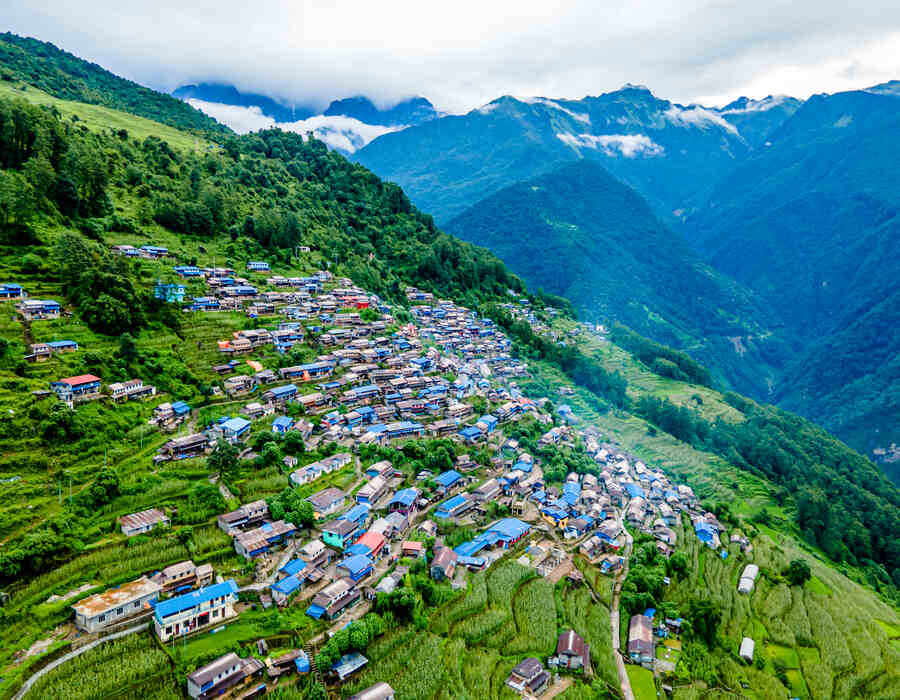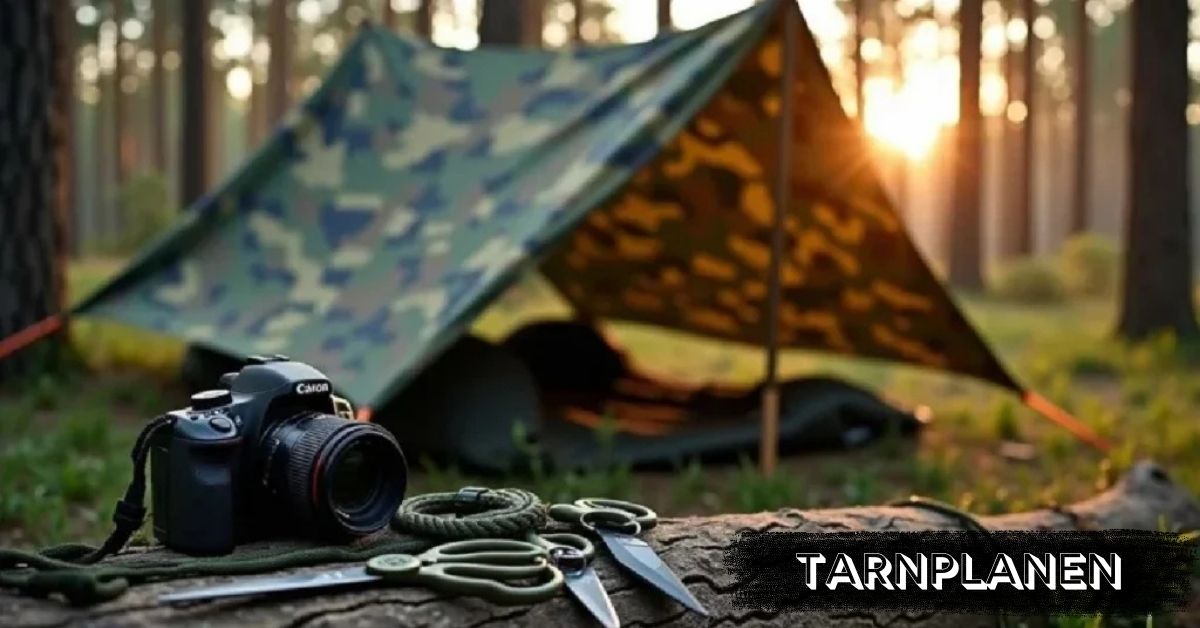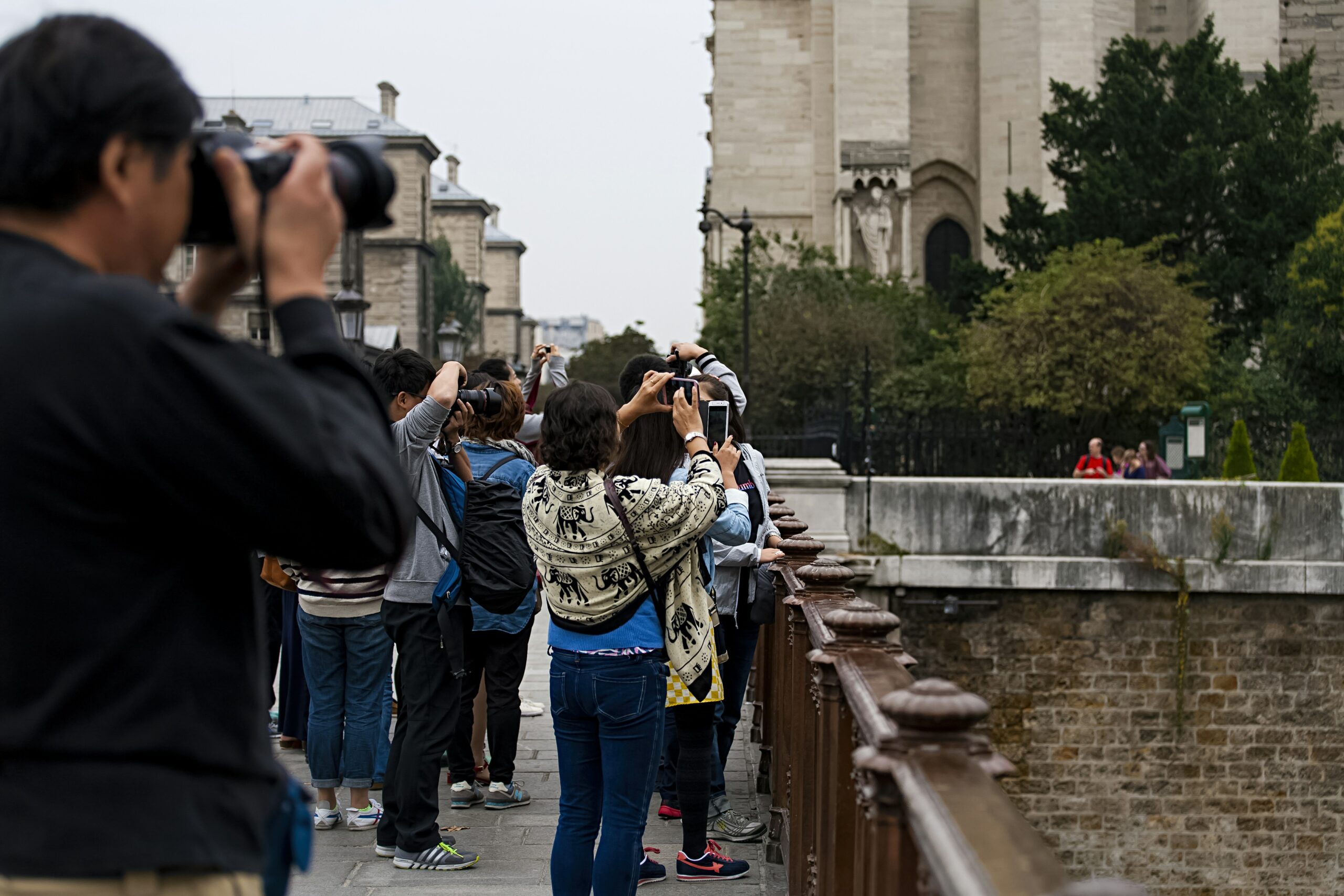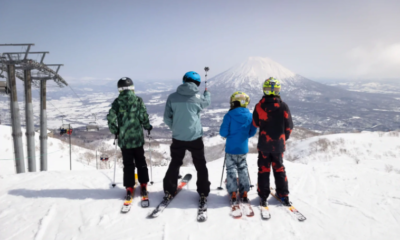Travel
Exploring Sikkim: A Journey Through Mountains, Monasteries, and Mystique

Nestled in the lap of the Himalayas, Sikkim is a stunningly beautiful and culturally rich state in northeastern India. Known for its breathtaking mountain landscapes, vibrant monasteries, exotic flora and fauna, and warm-hearted locals, Sikkim has become a top destination for travelers seeking adventure and tranquility alike. Whether you’re an avid trekker, a nature lover, or someone intrigued by the mystique of Buddhist culture, Sikkim has something extraordinary to offer.
To make the most of your trip, opting for well-crafted Sikkim Tour Packages is the best way to explore this Himalayan gem with ease and comfort. In this guide, we’ll walk you through why Sikkim is such a special place, the best tour packages available, and how to choose the right one for your next adventure.
Why Choose Sikkim for Your Next Adventure?
Sikkim is a land of contrasts — soaring snow-capped peaks, lush green valleys, serene lakes, and vibrant cultural festivals. It’s a haven for adventure seekers, offering trekking routes ranging from easy walks to challenging mountain trails. The state is also rich in biodiversity, featuring rhododendron forests, orchids, and rare wildlife like the red panda.
But Sikkim’s charm goes beyond nature and adventure. Its unique blend of Tibetan Buddhist traditions and Indian influences is evident in the architecture of its monasteries, local handicrafts, and warm hospitality of its people. Visitors are often enchanted by the peaceful aura of places like Rumtek Monastery, the colorful markets of Gangtok, and the pristine beauty of Gurudongmar Lake.
What to Expect from Sikkim Tour Packages
Choosing the right Sikkim Tour Packages can greatly enhance your travel experience by taking care of your logistics, accommodation, and sightseeing while providing expert guidance. Here are some key features you can expect in most packages:
1. Comprehensive Itinerary
Most packages cover major highlights such as Gangtok (the capital), Pelling, Tsongmo Lake, Nathula Pass, Yumthang Valley, and Lachen & Lachung in North Sikkim. The itinerary balances sightseeing with leisure and adventure activities.
2. Guided Tours and Local Experts
Experienced guides provide valuable insights into Sikkim’s culture, history, and natural wonders. Their expertise enriches your understanding of the region and helps you discover hidden gems off the beaten path.
3. Accommodation and Meals
Packages usually include comfortable stays in hotels or resorts ranging from budget-friendly to luxury. Many also offer authentic local cuisine as part of the experience, so you can savor Sikkimese specialties like momo dumplings, thukpa, and gundruk.
4. Transportation
Given Sikkim’s mountainous terrain, reliable transportation is crucial. Most tour packages arrange for private vehicles with skilled drivers, ensuring a smooth and safe journey across winding mountain roads.
Popular Sikkim Tour Packages to Consider
1. Classic Sikkim Tour (5-7 Days)
Ideal for first-time visitors, this package covers the essential sights such as Gangtok, Tsongmo Lake, Nathula Pass, and Pelling. Highlights include a visit to Rumtek Monastery, Kanchenjunga viewpoints, and the scenic waterfalls of Pelling.
2. Adventure and Trekking Package
For thrill-seekers, packages focusing on trekking and adventure activities are available. Routes like the Goecha La trek or Dzongri trek offer spectacular Himalayan vistas and close encounters with nature. These tours often include camping arrangements and professional guides.
3. North Sikkim Explorer
North Sikkim is known for its remote beauty and rugged landscapes. Tour packages here focus on Yumthang Valley, Gurudongmar Lake, and Lachung & Lachen villages. Due to restricted permits, these tours are typically organized by experienced operators ensuring hassle-free travel.
4. Cultural and Spiritual Tour
This package centers around the monasteries, local festivals, and cultural immersion. Explore Rumtek, Pemayangtse, and Tashiding monasteries while enjoying homestays and interacting with locals.
How to Choose the Right Sikkim Tour Package
Selecting the best Sikkim Tour Packages depends on your interests, budget, and travel style. Here are some tips:
- Define Your Interests: Are you looking for adventure, culture, nature, or a mix? Choose packages that highlight your preferred activities.
- Duration: Consider how much time you can spend. Shorter packages focus on key highlights, while longer tours allow in-depth exploration.
- Group vs. Private: Group tours are budget-friendly and social, while private tours offer flexibility and personalized experiences.
- Check Inclusions: Verify what the package covers—transfers, permits, meals, and guides—to avoid unexpected expenses.
- Reviews and Reputation: Research tour operators’ credibility through reviews and recommendations to ensure a reliable experience.
Best Time to Visit Sikkim
The ideal time for most Sikkim Tour Packages is from March to June and September to December. During these months, the weather is pleasant, skies are clear, and the roads are accessible. Monsoons (July-August) bring heavy rainfall, making travel difficult and some areas inaccessible. Winters can be very cold, but if you’re prepared, you can experience stunning snow-covered landscapes.
Preparing for Your Sikkim Adventure
- Permits: Certain areas in Sikkim require permits for tourists, especially North Sikkim. Most packages handle these formalities on your behalf.
- Health and Safety: Altitude sickness can be a concern due to high elevations. Stay hydrated, acclimatize gradually, and carry necessary medications.
- Packing: Carry layered clothing, sturdy walking shoes, sunscreen, and rain gear depending on the season.
- Respect Local Culture: Sikkimese people are warm and welcoming. Respect their customs, religious sites, and dress modestly when visiting monasteries.
Final Thoughts
With its dramatic landscapes, rich culture, and endless opportunities for adventure, Sikkim is a destination that leaves an indelible mark on every traveler’s heart. Choosing the right Sikkim Tour Packages ensures you experience the best of this Himalayan wonderland with ease, safety, and comfort.
Whether you’re gazing at the majestic Kanchenjunga, trekking through alpine meadows, or meditating in ancient monasteries, your Sikkim adventure awaits. So start planning your trip now and get ready to explore one of India’s most magical destinations.
Travel
Tarnplanen: The Complete Guide to Durable Tarpaulins

Tarnplanen, also known as tarpaulins, are versatile covers designed to protect goods, equipment, and outdoor spaces from environmental factors. They are widely used in construction, agriculture, transport, and even in daily household activities. Made from materials such as polyethylene, PVC, or canvas, these sheets offer excellent protection against rain, sun, dust, and wind. Over the years, tarnplanen have become an essential tool for individuals and industries alike, offering cost-effective and reliable solutions for covering and securing items.
The Origin and Evolution of Tarnplanen
The concept of protective covers dates back centuries when people used animal hides and woven fabrics to safeguard their belongings. With the advancement of synthetic materials in the 20th century, tarpaulins evolved into durable and weather-resistant sheets. Today’s tarnplanen combine modern technology, reinforced edges, and UV-resistant coatings, making them far more advanced than their early counterparts. This evolution has transformed them from simple covers to specialized tools for industries and personal use.
Materials Used in Tarnplanen
The quality and performance of a tarpaulin largely depend on its material. Polyethylene tarpaulins are lightweight, waterproof, and affordable, making them perfect for general use. PVC tarpaulins are heavier, stronger, and often used in industrial and transport settings due to their durability. Canvas tarpaulins, while traditional, remain popular because they are breathable and ideal for covering equipment that requires air circulation. Each material type has its strengths, and choosing the right one depends on the intended purpose.
Common Sizes and Thickness
Tarnplanen are available in a wide range of sizes and thickness levels. Smaller sheets may be used for domestic purposes like covering furniture, while larger ones are essential for construction sites and trucks. Thickness is often measured in grams per square meter (gsm), with heavier tarps offering better durability and resistance to harsh conditions. A 90 gsm tarp might suffice for lightweight use, while heavy-duty 200 gsm or higher versions are designed for industrial-grade applications.
Waterproofing and Weather Resistance
One of the biggest advantages of tarnplanen is their ability to withstand different weather conditions. Waterproof coatings and sealed seams ensure that rainwater does not penetrate the material. UV protection prevents the fabric from degrading under prolonged sunlight exposure. Additionally, tarnplanen are designed to resist mold and mildew, which is crucial for long-term use in damp environments. This level of weather resistance makes them indispensable in outdoor projects.
Industrial Uses of Tarnplanen
Industries rely heavily on tarnplanen for multiple applications. In construction, they serve as temporary roofs, protect building materials, and cover scaffolding. In logistics, trucks use heavy-duty tarpaulins to shield goods during transportation. Agriculture benefits from them as crop covers, greenhouse linings, or protection for stored hay. Even in mining and marine industries, specialized tarpaulins provide durable solutions to protect equipment and raw materials.
Household Applications of Tarnplanen
Beyond industrial purposes, tarnplanen are highly practical in everyday life. Homeowners use them to cover outdoor furniture, protect cars, or provide shade in gardens. They are also helpful during renovations to safeguard floors and furniture from dust and paint. Campers and outdoor enthusiasts rely on them as ground covers, makeshift shelters, or rain protection while traveling. Their versatility makes them a must-have item in every household.
Tarnplanen for Emergency Situations
During natural disasters like floods, hurricanes, or earthquakes, tarnplanen become lifesaving tools. They are used as temporary shelters, roof replacements, or to protect supplies from getting wet. Relief organizations stockpile tarpaulins to distribute quickly in affected areas. Their portability and ease of setup make them ideal for emergency response, providing immediate relief when permanent solutions are not available.
Tarnplanen in Transport and Logistics
The transport industry uses heavy-duty tarpaulins extensively to protect goods during transit. Trucks, trailers, and cargo ships often rely on these covers to ensure products remain intact against weather and dust. In many regions, laws require cargo to be secured with proper covers to avoid accidents. Tarnplanen, with their reinforced grommets and ropes, ensure that loads are tightly secured, reducing risks during long hauls.
Maintenance and Care for Tarnplanen
Like any tool, tarnplanen last longer when properly maintained. Regular cleaning with mild soap and water prevents dirt buildup and mold growth. It is important to store them in dry, shaded areas when not in use. Avoiding sharp objects and handling them carefully also prolongs their lifespan. With the right care, even a frequently used tarpaulin can last for several years.
Cost and Affordability
Tarnplanen are known for being cost-effective solutions. Their affordability makes them accessible to both individuals and large businesses. While higher-quality tarps may come at a greater initial cost, their durability ensures long-term savings by reducing replacement frequency. This balance of price and performance is one of the reasons tarnplanen are popular across industries.
Eco-Friendly Tarnplanen Options
With growing environmental awareness, manufacturers now offer eco-friendly tarpaulins made from recyclable and biodegradable materials. These alternatives reduce environmental impact without compromising on quality. Some eco-friendly versions are designed with reduced chemical coatings and sustainable production processes. Choosing such options helps consumers and industries align with sustainable practices.
How to Choose the Right Tarnplanen
Selecting the right tarpaulin depends on purpose, size, and durability needs. For household use, lightweight polyethylene versions are sufficient, while industrial users may require heavy-duty PVC sheets. Factors like UV resistance, waterproofing, and reinforced edges should also influence the decision. Understanding specific requirements ensures maximum efficiency and long-term satisfaction with the product.
Tarnplanen in Outdoor Events
Event organizers often use tarpaulins for stages, temporary seating areas, and equipment protection. Festivals, exhibitions, and sports events rely on them to create makeshift shelters and shade areas. Their quick installation and adaptability make them ideal for short-term outdoor events. Tarnplanen ensure that weather conditions do not disrupt activities, keeping events running smoothly.
Advantages of Using Tarnplanen
The key benefits of tarnplanen include versatility, durability, affordability, and ease of use. They are lightweight yet strong, easy to transport, and quick to set up. Their wide range of applications—from household tasks to industrial uses—makes them invaluable. Above all, they offer reliable protection against weather and environmental factors, making them one of the most practical investments available.
Challenges and Limitations
Despite their many advantages, tarnplanen are not without limitations. Lightweight versions may tear easily if exposed to sharp edges or strong winds. Prolonged exposure to harsh sunlight can weaken lower-quality tarps. Additionally, improper installation may cause water pooling, which can damage the material over time. Recognizing these limitations helps users make better purchasing decisions.
Innovations in Tarnplanen Technology
Modern technology has introduced advanced features in tarpaulin manufacturing. Flame-retardant coatings, anti-fungal treatments, and heat-sealed seams are now common in premium versions. Smart tarpaulins embedded with sensors are even being tested for logistics to monitor temperature and humidity levels. These innovations promise to enhance performance and expand the role of tarnplanen in future industries.
Conclusion
Tarnplanen have proven themselves as reliable, versatile, and essential tools across multiple industries and households. From protecting goods in transit to offering shelter in emergencies, their importance cannot be overstated. With proper selection, care, and maintenance, they can serve as long-lasting solutions for a wide range of needs. As technology advances, the future of tarnplanen looks even more promising, blending practicality with innovation.
FAQs
- What is the most durable material for tarnplanen?
PVC tarpaulins are considered the most durable due to their thickness, strength, and resistance to harsh weather conditions. - Can tarnplanen be recycled?
Yes, many modern tarnplanen are recyclable, and eco-friendly versions are made with sustainable materials to reduce environmental impact. - How long does a tarpaulin usually last?
With proper care, a high-quality tarpaulin can last several years, depending on usage and exposure to environmental factors. - Are tarnplanen suitable for camping?
Absolutely. They are often used as ground covers, rain shelters, and protective layers for camping gear. - What size tarpaulin should I buy?
The size depends on your intended use. For small household tasks, compact tarps work well, while industrial or transport needs require larger, heavy-duty versions.
Travel
Veneajelu: Discover the Joy of a Relaxing Boat Ride

The Finnish word veneajelu translates to “boat ride” in English. In Finland and other countries with strong connections to water, a veneajelu is more than just a ride—it’s an experience of relaxation, freedom, and nature. Whether on a lake, river, or coastal waters, taking a boat ride provides an escape from daily life and a chance to connect with the natural world.
The Meaning Behind Veneajelu
At its core, veneajelu is about enjoying time on the water, usually in a simple and leisurely manner. Unlike fishing trips or professional sailing, it emphasizes relaxation, sightseeing, and spending quality time with friends or family.
Cultural Importance of Veneajelu in Finland
In Finland, where lakes are abundant and summers are short yet beautiful, veneajelu is a cherished tradition. Families often take evening boat rides during summer holidays, enjoying the midnight sun, calm waters, and peaceful landscapes.
Why People Love Boat Rides
People are drawn to veneajelu because it combines tranquility with adventure. The gentle rocking of the boat, the fresh air, and the open water create a unique sense of freedom. It’s a reminder of how simple pleasures can bring immense joy.
Types of Boats Used in Veneajelu
Veneajelu can be enjoyed with various types of boats: small wooden rowboats, motorboats, sailboats, or even canoes. The choice depends on personal preference, location, and the kind of experience one is seeking.
Veneajelu as a Family Activity
Boat rides are often family-friendly, allowing children and adults to spend time together outdoors. Parents introduce their kids to nature, teaching them respect for water and safety while creating lasting memories.
Romantic Veneajelu Experiences
For couples, a veneajelu can be an intimate and romantic outing. A sunset ride on a calm lake or a moonlit journey along the coast creates the perfect atmosphere for meaningful moments.
Adventure and Exploration
While many see veneajelu as peaceful, it can also be adventurous. Exploring hidden islands, secluded beaches, or riverside villages gives a sense of discovery and excitement.
Health Benefits of Boat Rides
Spending time on the water reduces stress, improves mood, and encourages mindfulness. The physical activity of rowing or sailing can also provide light exercise, making veneajelu good for both the body and mind.
Seasonal Appeal of Veneajelu
Summer is the most popular season for veneajelu in Finland, with long days and warm weather. However, autumn boat rides bring beautiful foliage, while spring rides celebrate the awakening of nature. Winter, on the other hand, freezes lakes, making boat rides impossible but building anticipation for summer.
Safety Tips for Veneajelu
Safety is a key part of any boat ride. Wearing life jackets, checking the weather forecast, and avoiding overcrowding are simple measures that ensure a pleasant experience. Responsible boating helps prevent accidents and protects everyone on board.
Veneajelu in Tourism
Tourists visiting Finland or other lake-rich regions often look forward to a veneajelu experience. Many resorts, hotels, and cabins offer boat rentals, guided tours, or traditional rowboat rides, making it accessible to visitors.
Eco-Friendly Veneajelu
With growing environmental awareness, eco-friendly boating is becoming important. Using electric boats, minimizing fuel use, and respecting wildlife habitats help preserve natural waterways for future generations.
Memories and Traditions
For many Finns, veneajelu brings back childhood memories of family holidays, fishing trips, and summer nights on the water. It is not just an activity but a tradition that strengthens family bonds and cultural identity.
Conclusion
Veneajelu is more than just a boat ride—it is an experience that blends relaxation, culture, and nature. Whether enjoyed with family, friends, or alone, it offers peace, adventure, and a deep connection to the water. Its cultural roots and timeless appeal make it a cherished part of life, especially in Finland, where lakes and waterways define the landscape.
FAQs
- What does veneajelu mean?
Veneajelu is the Finnish word for “boat ride.” - Where is veneajelu most common?
It is most common in Finland and other regions with many lakes and rivers. - Can tourists enjoy veneajelu?
Yes, many tourist destinations in Finland offer boat rentals or guided rides. - What boats are used for venea’jelu?
Rowboats, motorboats, sailboats, and canoes are all common choices. - Is veneajelu safe for children?
Yes, it is safe when proper precautions like life jackets are used.
Travel
How to Avoid Tourist Crowds in Photos at Popular Places in Rome

Rome, Italy, is a dream destination for many travelers. The city is home to some of the most iconic landmarks in the world, such as the Colosseum, the Roman Forum, and the Vatican. While these sites are undeniably stunning, they can also be overcrowded, especially during peak tourist seasons. As a Rome Italy photographer, capturing the beauty of the Eternal City without the hustle and bustle of large crowds can be challenging. However, with a few expert techniques and the right planning, it is entirely possible to take stunning, crowd-free photos at some of Rome’s most popular locations.
In this guide, we’ll share insider tips on how to avoid tourist crowds and photograph Rome’s most famous landmarks in all their glory. Whether you’re a seasoned photographer or an enthusiastic traveler with a camera, these strategies will help you capture Rome in its most serene form.
Timing is Everything
The key to avoiding crowds in Rome is timing. Popular tourist sites tend to be packed during certain hours of the day, especially around midday when most tourists arrive. To avoid these crowds and ensure the best possible lighting for your photos, you’ll need to plan your visit around the optimal times.
Early Morning Magic
One of the most effective ways to get a crowd-free shot is by getting up early. The early hours of the morning, right after sunrise, are the best time to capture iconic locations like the Colosseum, Trevi Fountain, and the Spanish Steps.
Why early mornings?
- The light is softer and more flattering, which makes for better photographs.
- Tourist crowds are sparse, allowing you to take clean shots without distractions.
- The air is cooler, and the city is quieter, giving you a more peaceful experience.
Arriving at these sites right when they open, or even a little before, will give you an exclusive opportunity to capture these locations at their best.
Golden Hour
Golden hour—the period just after sunrise or before sunset—offers some of the most beautiful natural light for photography. The light is warm and diffused, and it creates a magical atmosphere that makes for stunning photos. During golden hour, many of Rome’s most famous landmarks, such as the Pantheon and St. Peter’s Basilica, are bathed in beautiful light.
To make the most of golden hour:
- Research sunrise and sunset times in advance.
- Be ready to shoot about 30 minutes before and after the official sunrise or sunset time.
- Choose your location carefully to ensure the best angle for the light.
By planning your shoots during golden hour, you’ll avoid the harsh midday sunlight while also avoiding the crowds that usually appear later in the day.
Night Photography
While the morning may be the best time for some places, nighttime can also offer a unique opportunity to photograph Rome’s landmarks without large crowds. At night, many tourist attractions are illuminated, creating a different ambiance than what you would find during the day.
Places like the Trevi Fountain or the Colosseum are beautifully lit after dark, providing dramatic and atmospheric photos. Furthermore, these sites tend to be much quieter at night, giving you the space to capture long exposure shots without the interference of tourists.
Choosing the Right Location
In addition to timing, choosing the right spots for your photos can help you avoid large crowds. Many of Rome’s landmarks are extremely popular, so planning your itinerary wisely can make a significant difference in your ability to capture photos without distractions.
Lesser-Known Gems
While the Colosseum and the Vatican are obvious choices for photography, they can also be the most crowded. Fortunately, Rome is full of hidden gems that are just as beautiful but tend to attract fewer visitors. Consider exploring off-the-beaten-path locations such as:
- Villa Borghese Gardens: A peaceful park offering scenic views of Rome with fewer tourists.
- Gianicolo Hill (Janiculum Hill): For breathtaking panoramic views of the city, away from the usual crowds.
- Aventine Hill: A charming neighborhood with less foot traffic and beautiful views of the city, including the iconic keyhole view of St. Peter’s Basilica.
These lesser-known locations provide a more tranquil setting and can still offer spectacular photo opportunities.
Unique Angles and Perspectives
Instead of taking the traditional shot from the main entrance of a landmark, consider shooting from a different angle. For example:
- Capture the Colosseum from the rear, where fewer tourists gather.
- Photograph the Trevi Fountain from a side angle, which often results in more artistic shots.
- Use narrow alleyways and side streets to frame landmarks from a unique perspective.
By thinking creatively and exploring unconventional angles, you can capture images that stand out and avoid the typical tourist-filled shots.
Using the Right Gear
Having the right gear can help you make the most of your time and avoid distractions during a photo shoot. While it’s possible to take great photos with a smartphone, professional photographers often prefer using DSLR or mirrorless cameras for greater flexibility and image quality.
Essential Equipment for Crowd-Free Photography
- Wide-angle lens: A wide lens is perfect for capturing large landmarks or scenic views without the need to step back into crowded areas.
- Tripod: Especially useful for capturing long exposure shots during golden hour or at night.
- Remote shutter release: A useful tool for avoiding camera shake when photographing without a tripod.
By bringing the right equipment, you can quickly set up your shots and ensure high-quality images without the need to linger in crowded areas.
Working with a Professional Photographer
Sometimes, it’s worth hiring a professional photographer to help you capture the perfect shot in Rome. A professional photographer, such as “Mike Kire,” has extensive experience in dealing with crowded locations and knows the best times, angles, and techniques to avoid tourists in the frame.
A professional can:
- Help you plan your shoot efficiently, ensuring you visit the most photogenic sites during the least crowded times.
- Offer creative insights into framing and composition.
- Take the pressure off you so you can enjoy the experience and focus on capturing memories, rather than stressing about the crowds.
Practical Tips for Avoiding Crowds in Rome Photos
To further help you, here are some practical tips for avoiding crowds during your photography sessions in Rome:
- Research Opening Hours: Many sites open early or close late, offering times when crowds are fewer.
- Avoid Major Holidays: Roman holidays like Christmas, Easter, and Ferragosto bring in thousands of tourists, so plan your visit around these times.
- Use Local Knowledge: Ask locals for tips on hidden gems and less crowded times to visit popular spots.
- Plan Your Day Strategically: Start with less popular spots early in the morning, then visit crowded places later in the day when tourist traffic has subsided.
- Go Off-Season: Visiting Rome during the shoulder seasons—spring or autumn—often means fewer tourists.
Rome is undoubtedly one of the most photographed cities in the world, and with the right approach, it’s possible to capture its beauty without the crowds. By planning your shoots around the best times of day, choosing off-the-beaten-path locations, and thinking creatively about your compositions, you can create stunning images that showcase the timeless beauty of Rome.
Whether you’re a professional photographer or simply an avid traveler with a passion for photography, these strategies will help you capture Rome at its finest. And if you ever need expert assistance, a professional photographer like Mike Kire can guide you in making the most of your photography adventure in the Eternal City.
With these tips in mind, you’ll be able to avoid the tourist crowds and capture the essence of Rome in all its glory, ensuring that your photos are as timeless as the city itself.
-

 Sports9 months ago
Sports9 months agoThe Ultimate Guide to Ski and Snowboard Equipment, Ski Equipment Rental, and Snowboard Equipment Rental
-

 General12 months ago
General12 months agoStart-094: Unlocking Its Secrets and Understanding Its Power
-

 Entertainment1 year ago
Entertainment1 year agoHulu Error Code Rununk13: A Complete Guide
-

 Entertainment11 months ago
Entertainment11 months agoSoaper.tv: A Comprehensive Guide to Your Streaming Companion
-

 General9 months ago
General9 months agoWindstream Email: Features, Setup, and Troubleshooting
-

 Technology1 year ago
Technology1 year agoWhy SBCodez is the Go-To Resource for Aspiring Coders
-

 Games10 months ago
Games10 months agoPizza Edition Games: The Ultimate Guide to Fun and Flavor
-

 Uncategorized10 months ago
Uncategorized10 months agoOceanofPDF: Free eBooks Source or Copyright Violation?
